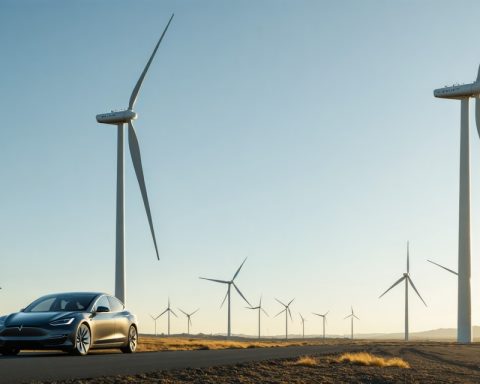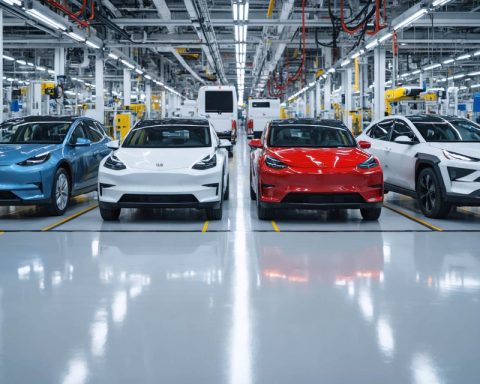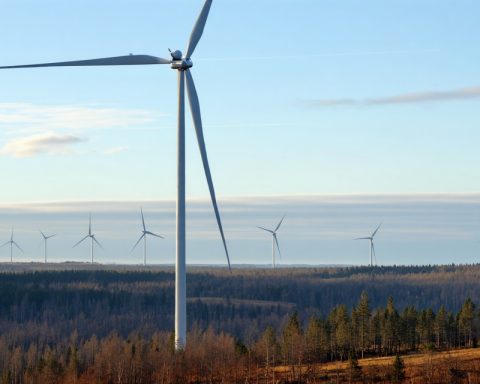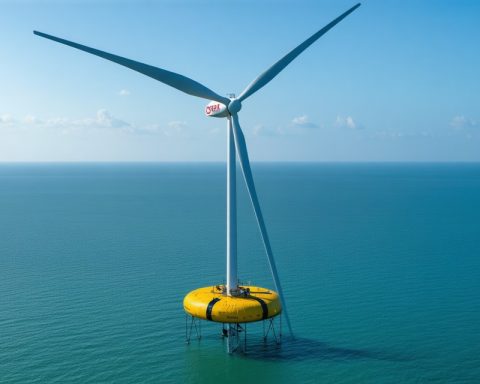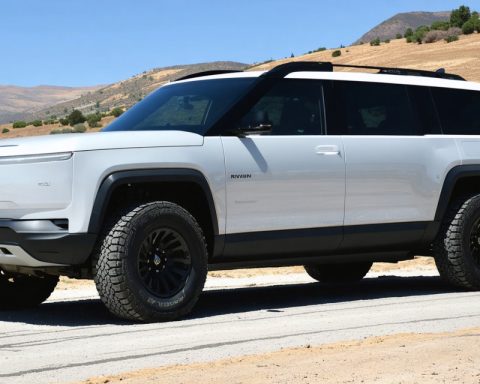- The installation of Saint Helena’s first public electric vehicle (EV) charger marks a pivotal step towards sustainable energy and economic resilience.
- The island, with a population of about 4,300, aims to reduce reliance on costly fuel imports through renewable energy initiatives.
- Partnerships, like that between Subaru and Easee, are crucial in positioning Saint Helena as a testing ground for cutting-edge EV infrastructure.
- Despite having only four EVs, the new charger serves as a catalyst for increased interest and potential adoption of sustainable transportation among residents.
- Saint Helena’s plan involves incentivizing EV adoption, enhancing infrastructure, and implementing supportive policies for an eco-friendly transportation network.
- The island’s leadership, exemplified by Mark Brooks and supported by pioneers like Adam Rodgers of Easee, embarks on a bold journey to harness wind and solar energy.
- Saint Helena’s shift towards sustainable energy serves as an inspirational model for communities seeking to transform isolation into a canvas for innovation.
The distant shores of Saint Helena, a secluded island floating 1,200 miles off Africa’s southwest coast, have sparked a small, yet powerful revolution. With just under 4,300 residents battling the constraints of isolation, the installation of the island’s first public electric vehicle (EV) charger delivers a jolt of change, promising to rewrite its energy narrative.
Known for its windswept landscapes and untapped solar potential, Saint Helena stands poised to capitalize on cleaner, renewable energy. The move towards EVs not only underscores a shift from costly fuel imports but also opens a promising chapter for economic resilience. As sunlight dances upon its historic terrain, solar panels could soon interlace with wind turbines, forming the backbone of the island’s energy transformation.
This innovative charger, birthed from a collaboration between automaker Subaru and Easee, a trailblazer in charging solutions, positions Saint Helena as a testing ground for robust EV infrastructure. Despite housing only four EVs, the station could electrify the islanders’ curiosity, inching them closer to adopting sustainable transportation and realizing substantial savings – both environmental and financial. A typical EV owner knows the truth: maintenance costs plunge to nearly half those of traditional vehicles, while the absence of fuel expenditure deepens the wallet’s reserves.
The global shift towards renewable energy beckons Saint Helena to join the wave. Visionary leaders like Mark Brooks, the island’s Minister for Treasury and Economic Development, echo a resonance of ambition. The plan? Incentivize EV adoption, fortify infrastructure, and carve policies that embolden the island’s vehicular landscape. The path forward envisions an eco-friendly convoy powered by the very elements that surround them—sun and wind.
Easee’s UK managing director, Adam Rodgers, embodies bold optimism. His confidence in the charger’s efficacy—a true testament to pioneering spirit—is palpable. For Rodgers, Saint Helena offers more than a picturesque locale. It serves as a proving ground, a realm where innovation meets endurance.
Saint Helena’s venture into public EV charging embodies a lesson in seizing opportunity. The island’s pursuit of sustainable energy illuminates a path not just for itself, but for any community daring to redefine isolation as innovation. As the charger hums to life, it carries a message clear as the ocean horizon: Remoteness is not a boundary but a canvas for ingenious endeavors.
Revolutionizing Remote Islands: Saint Helena Paves the Path to Renewable Energy
Introduction
Saint Helena, the remote island situated 1,200 miles off the southwest coast of Africa, is embracing a sustainable future with the installation of its first public electric vehicle (EV) charger. Despite the island’s modest population of just under 4,300 residents and only four EVs, this move signifies a major shift towards renewable energy, opening the door to economic resilience and environmental consciousness.
Untapped Renewable Potential
Saint Helena’s unique geographical position offers an abundance of solar and wind energy, making it an ideal location for developing renewable energy solutions. The island’s landscapes, characterized by strong winds and ample sunlight, are ripe for the installation of both solar panels and wind turbines. By harnessing these natural resources, Saint Helena can significantly reduce its reliance on costly fuel imports, paving the way for energy independence.
Economic and Environmental Benefits
The introduction of EV infrastructure contributes not only to environmental sustainability but also offers substantial economic benefits. Electric vehicles have lower maintenance costs compared to traditional vehicles, with expenses nearly halved, according to a study by Consumer Reports. Furthermore, the elimination of fuel costs enhances savings. This transition supports the island’s broader economic goals by reducing dependence on external fuel sources and promoting local energy solutions.
Strategic Collaboration and Leadership Vision
The establishment of the EV charging station on Saint Helena is backed by a strategic collaboration between automaker Subaru and Easee, a pioneer in charging solutions. Adam Rodgers, Managing Director of Easee UK, views Saint Helena as a promising testing ground for new technologies in remote settings, demonstrating how innovation can flourish in isolation.
Mark Brooks, Saint Helena’s Minister for Treasury and Economic Development, envisions policies that will spur EV adoption and reinforce infrastructure. The leadership aims to create an eco-friendly environment where vehicles are powered by sustainable energy sources.
Real-World Use Cases and Industry Trends
Saint Helena’s initiative is a microcosm of the global shift towards renewable energy. Islands and remote regions worldwide face similar challenges in energy supply; thus, Saint Helena’s approach can serve as a blueprint. The broader industry is trending towards integrating EVs into everyday transportation, with government incentives and advancements in battery technology driving growth.
Pros and Cons of Electric Vehicle Adoption
Pros:
– Reduced environmental impact with zero emissions.
– Lowered operational and maintenance costs.
– Enhanced energy independence through local renewable sources.
Cons:
– Initial high cost of EVs and charging infrastructure.
– Limited vehicle options, particularly in remote locations.
– Possible challenges in maintaining a steady supply of renewable energy.
Actionable Recommendations
– For Residents: Consider transitioning to electric vehicles as infrastructure develops to take advantage of long-term savings.
– For Policymakers: Develop incentives and supportive policies to encourage EV adoption and investment in renewables.
– For Innovators: Explore remote areas as viable sites for renewable energy testing and development.
Conclusion
Saint Helena’s journey into renewable energy is a testament to the power of innovation in the face of isolation. As the island leverages its natural resources, it sends a powerful message: Distance is not a drawback but an opportunity for imaginative solutions. Other communities can look to Saint Helena as an inspiring model for embracing a sustainable future.
For more information on renewable energy and electric vehicles, visit Subaru or Easee.




